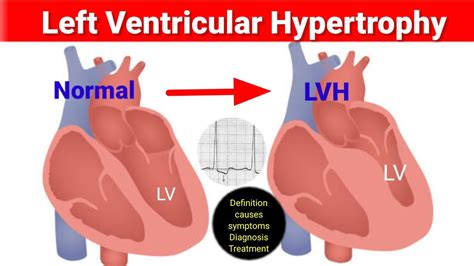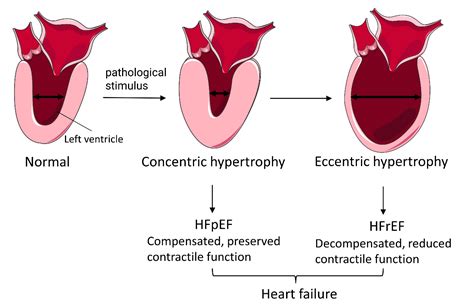concentric lv hypertrophy Left ventricular hypertrophy (LVH) is when the main pumping chamber of the heart becomes thicker and less efficient. It can be caused by high blood pressure, aortic valve stenosis, or other conditions. Learn how to . flamiah17 liked this. dae-jah-blog liked this. thatslut013 liked this. 777xluvlaii liked this. trvppybro liked this. ilyk11 liked this. gracie-mansionn liked this. yurboyjaden13 liked this. diversedking posted this.
0 · left ventricular hypertrophy risk factors
1 · left ventricular hypertrophy by voltage
2 · left ventricular hypertrophy and heart failure
3 · eccentric vs concentric hypertrophy heart
4 · concentric vs eccentric ventricular hypertrophy
5 · concentric vs eccentric lvh
6 · concentric vs eccentric hypertrophy causes
7 · concentric remodeling vs hypertrophy
Waterdeep Dragon Heist, similarly to the Lost Mine of Phandelver, is a shortened campaign running characters from level 1 to level 5. This adventure takes place entirely in the city of Waterdeep, one of D&D’s most recognizable locations.
To diagnose left ventricular hypertrophy, a healthcare professional does a physical exam and asks questions about your symptoms and family's health history. The care .

Concentric left ventricular hypertrophy is an abnormal increase in left ventricular myocardial mass caused by chronically increased workload on the heart, most commonly resulting from pressure overload-induced by . LVH is a condition where the left ventricle of the heart thickens and weakens due to pressure overload. It can be caused by high blood pressure, diabetes, heart valve problems and other factors. Learn about . Left ventricular hypertrophy (LVH) is when the main pumping chamber of the heart becomes thicker and less efficient. It can be caused by high blood pressure, aortic valve stenosis, or other conditions. Learn how to . Hypertrophic cardiomyopathy (HCM) is a disease in which the heart muscle becomes thickened, also called hypertrophied. The thickened heart muscle can make it harder .
Left ventricular hypertrophy (LVH) makes it harder for the heart to pump blood efficiently. It can result in a lack of oxygen to the heart muscle. It can also cause changes to the heart’s . Left ventricular hypertrophy, or LVH, is a term for a heart’s left pumping chamber that has thickened and may not be pumping efficiently. Sometimes problems such as aortic stenosis or high blood pressure overwork .
In this blog we describe left ventricular hypertrophy (LVH) and identify the different categories of concentric, eccentric and concentric remodeling. In Part 2 of the blog we will elaborate on LV Mass (LVM) and Relative Wall Thickness . Left ventricular hypertrophy (LVH) is an increase in the weight of the left ventricle due to thickening of the left ventricle walls, an increase in space within the left ventricle, or both. The two most common causes of LVH are .
Whether modifications of LV geometry from concentric to eccentric are beneficial beyond the reduction of LV mass has been debated; however, the conclusion has been, in general, that concentric LV hypertrophy is also characterized by greater LV mass than eccentric LV hypertrophy; therefore, these 2 features (ie, concentric geometry and LV .
Left ventricular hypertrophy, or LVH, is a term for a heart’s left pumping chamber that has thickened and may not be pumping efficiently. Sometimes problems such as aortic stenosis or high blood pressure overwork . During pregnancy, the requirement for an increased stroke volume and cardiac output is accompanied by a substantial increase in LV dimension and mass, which regresses over months in the postpartum period. 54 Finally, both . Background— Left ventricular hypertrophy (LVH) is traditionally classified as concentric or eccentric, based on the ratio of LV wall thickness to chamber dimension. We propose a 4-tiered LVH classification based on LV concentricity0.67 (mass/end-diastolic volume0.67) and indexed LV end-diastolic volume (EDV). Methods and Results— Cardiac .
There is consistency in the literature linking concentric left ventricular hypertrophy (LVH) with poor outcome, whereas published studies report conflicting results on the association of eccentric LVH and outcome. Recently, a new 4-group classification system derived by cardiac MRI has been suggested as an alternative to the established 2-group .Ventricular hypertrophy (VH) is thickening of the walls of a ventricle (lower chamber) of the heart. [1] [better source needed] Although left ventricular hypertrophy (LVH) is more common, right ventricular hypertrophy (RVH), as well as concurrent hypertrophy of both ventricles can also occur.Ventricular hypertrophy can result from a variety of conditions, both adaptive and . Background—Left ventricular hypertrophy (LVH; high LV mass [LVM]) is traditionally classified as concentric or eccentric based on LV relative wall thickness. We evaluated the prediction of subsequent adverse events in a new 4-group LVH classification based on LV dilatation (high LV end-diastolic volume [EDV] index) and concentricity (mass/end .Left ventricular hypertrophy with secondary repolarization abnormalities as seen on ECG Histopathology of (a) normal myocardium and (b) myocardial hypertrophy. Scale bar indicates 50 μm. Gross pathology of left ventricular hypertrophy. Left ventricle is at right in image, serially sectioned from apex to near base.
Left ventricular hypertrophy (LVH) means that the muscle of the heart's main pump (left ventricle) has become thick and enlarged. This can happen over time if the left ventricle has to work too hard. This part of the heart needs to be strong to pump oxygen-rich blood to your entire body. When the ventricle gets thick, other changes can happen . The main findings in patients with AFD are concentric LV hypertrophy 52 and non-ischaemic mid-wall or subepicardial LGE pattern mainly involving the basal inferolateral LV segment. 53 In male patients, LGE does not precede the development of LV hypertrophy, while it has been reported in a significant proportion of female patients without . A normal left ventricular (LV) chamber size (end-diastolic volume [EDV]) indicates a concentric or normal geometry; differences in relative wall thickness (RWT) distinguish concentric from normal remodeling. A dilated chamber dictates an eccentric geometry; those with left ventricular hypertrophy (LVH) are distinguished by differences in RWT. Left ventricular (LV) remodeling and hypertrophy are associated with the development of congestive heart failure (CHF) and an increased incidence of other major cardiovascular events, including sudden death. 1–4 LV remodeling may be produced by various physiological and pathological mechanisms. Under pressure overload, remodeling is primarily .
Left ventricular hypertrophy (LVH) is a common finding in patients with cardiovascular disease (CVD) and CVD risk factors and is diagnosed either by electrocardiogram (ECG) . If the wall thickness is seen involving all walls of the LV, it is considered to be concentric. If only some walls are involved, such as the septum, it is considered .The structural changes include hypertrophy of existing myocytes and addition of sarcomeres together with an increase in connective tissue, ultimately leading to an overall increase in ventricular mass.3, 9, 10 LV structural changes can include concentric or eccentric remodeling, concentric or eccentric hypertrophy, or a combination of .
Left ventricular hypertrophy (LVH) means that the muscle of the heart's main pump (left ventricle) has become thick and enlarged. This can happen over time if the left ventricle has to work too hard. This part of the heart needs to be strong to pump oxygen-rich blood to your entire body. When the ventricle gets thick, other changes can happen . In the conventional paradigm of the natural history of left ventricular hypertrophy (LVH), the left ventricle (LV) first develops concentric hypertrophy (wall thickening) before transitioning to a dilated . Left ventricular hypertrophy (LVH) is sometimes assumed to occur only as a consequence of hypertension. However this is often not the case. LVH is 'an independent risk factor for myocardial infarction and death in men and women with hypertension, and in asymptomatic subjects with normal blood'. The presence of LVH increases the risk of . Left ventricular hypertrophy (LVH): Markedly increased LV voltages: huge precordial R and S waves that overlap with the adjacent leads (SV2 + RV6 >> 35 mm). R-wave peak time > 50 ms in V5-6 with associated QRS broadening. LV strain pattern with ST depression and T-wave inversions in I, aVL and V5-6. ST elevation in V1-3. Prominent U waves in V1-3.

Concentric hypertrophy is a hypertrophic growth of a hollow organ without overall enlargement, [1] . In response to the pressure overload left ventricular wall thickness markedly increases—while the cavitary radius remains relatively unchanged. These compensatory changes, termed "concentric hypertrophy," reduce the increase in wall tension .
left ventricular hypertrophy risk factors
It remains uncertain why some hypertensive patients develop concentric hypertrophy and others eccentric hypertrophy ().The joint influences of volume overload, pressure overload, and contractile dysfunction have been emphasized. 28,30,31 Undoubtedly, some of the apparent variability of the hypertrophic response among hypertensive patients will . The main findings in patients with AFD are concentric LV hypertrophy 52 and non-ischaemic mid-wall or subepicardial LGE pattern mainly involving the basal inferolateral LV segment. 53 In male patients, LGE does not precede the development of LV hypertrophy, while it has been reported in a significant proportion of female patients without .
There is mild concentric LV hypertrophy. The diastolic filling pattern is normal of the age of the patient. RV is normal in size and function. Left Atrium is normal in size. Right Atrium is normal in size and function. Aortic valve is tri-leaflet and appears structurally normal. No . Left ventricular hypertrophy, especially concentric hypertrophy, has been shown to be an independent factor of cardiovascular diseases in patients with hypertension. Obstructive sleep apnea (OSA .The large Dallas Heart Study established that concentric ventricular hypertrophy (LV wall thickness, concentricity, and indexed LV mass) was independently associated with coronary atherosclerosis measured by coronary artery calcium, which implies the presence of CAD. However, ventricular dilation was not associated with the coronary .
Even individuals who experience morning hypertension or have normotensive blood pressure with a difference between morning and evening pressures greater than 15 mmHg have a significant increased risk of developing concentric LV hypertrophy . In fact, concentric LV hypertrophy resulting from hypertension has an increased likelihood to be .
Identification of LV Geometric Patterns 732 Concentric LV Hypertrophy 734 Eccentric LV Hypertrophy 734 Concentric Remodelling 734 Other Classification 735 Natural History of LV Geometry in Hypertension 735 Tissue Characterization 735 Arterial Function and Ventriculo-Arterial Matching 736 Arterial Function 736 Arterial Afterload 736 It remains uncertain why some hypertensive patients develop concentric hypertrophy and others eccentric hypertrophy ().The joint influences of volume overload, pressure overload, and contractile dysfunction have been emphasized. 28,30,31 Undoubtedly, some of the apparent variability of the hypertrophic response among hypertensive patients will .

adidasi fake

Los diseños de uñas que querremos con la subida de temperaturas este 2022. La Primavera-Verano 2022 llega repleta de apuestas de manicura que devendrán sinónimo de optimismo. Conoce qué manicuras están en boga según los expertos. Por Rebeca Domènech. 26 de abril de 2022.
concentric lv hypertrophy|concentric vs eccentric ventricular hypertrophy



























